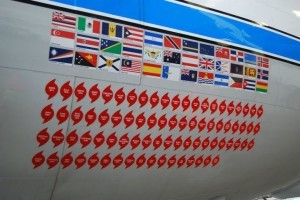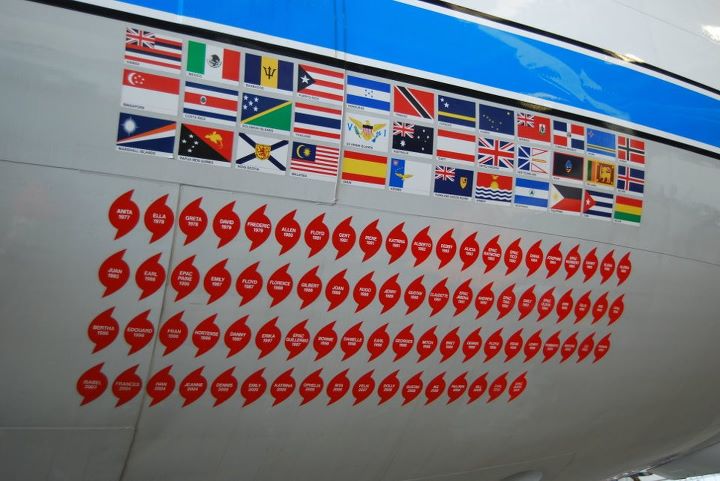The hurricane planes known affectionately as “Miss Piggy” and “Kermit” are getting new Rolls-Royce engines, new wings and better radar.
Every hurricane season for nearly four decades, the two technologically packed planes have flown into storms at speeds of up to 300 mph, collecting research and forecasting data to transmit back to the mainland.
The 38-year-old planes are getting $42 million “nose-to-tail” upgrades of key components. The money comes from the post-Superstorm Sandy Disaster Relief Appropriations Act of 2013. While the planes are routinely maintained, this is the first big overhaul in more than a decade.

The National Oceanic and Atmospheric Administration estimates that the refurbishments could keep them flying for decades. The improvements also will mean better fuel efficiency and additional safety for the crew and scientists who fly in the mobile weather stations.
“We’ll be able to see things better and react better,” said Devon Brakob, a NOAA navigator aboard the hurricane missions.
At MacDill Air Force Base in Tampa, the plane dubbed “Miss Piggy” sits in a cavernous hangar. Affixed to the plane’s rear are dozens of red hurricane symbols, some with familiar names: Andrew, Floyd, Katrina. Every storm gets its own decal.
In the weeks before the start of hurricane season June 1, the plane’s interior and exterior are in pieces, although a touch of whimsy hangs in the cockpit: a pair of black fuzzy dice. The aircraft’s four engines are being swapped for new Rolls-Royce engines that will not only get better gas mileage but will allow the plane to stay in the air longer.
Currently, the planes fly missions of about 10 hours; it’s not unusual for the crew to fly three or four hours to a storm in the Caribbean, spend a couple of hours inside the storm gathering data, and return home.
The plane also is receiving upgraded radar in the tail, fuselage and nose. During a storm, researchers and forecasters use the radar and other instruments to measure a storm’s track and strength. They also slip small buoys through specially designed tubes that shoot out the belly of the plane and into the storm and ocean below, to collect data such as sea temperature and wave height.
This year, only Miss Piggy will soar through the storms. Kermit is in Jacksonville at the U.S. Navy’s Fleet Readiness Center, getting new wings. Next year, the planes will swap places, and Miss Piggy will be out of commission.
NOAA officials note that while they’ve never lost a plane during a hurricane mission, they are risky and turbulent flights.
“It’s like a huge, wooden roller coaster, times 100,” Brakob said.
NOAA also has a Gulfstream IV that flies over storms and provides a detailed picture of upper atmosphere forecasts and steering currents during a hurricane.
Last year, U.S. government scientists launched winged drones into Hurricane Edouard, hoping to collect data that could help forecasters understand what makes some storms strengthen into monsters while others fade away. It was the first time that unmanned aircraft were dispatched from the hurricane hunter planes flying through Atlantic tropical storms.
Capt. Harris Halverson, the commanding officer of the NOAA Aircraft Operations Center in Tampa, says that while the planes’ mission is to aid research, it’s also to help the public. The data collected on the plane eventually filters to meteorologists, TV weather forecasters and the media.
“People’s memories are short,” he said. “We’re helping people have a plan for hurricane season.”
Was this article valuable?
Here are more articles you may enjoy.


 Insurance AI Demo Day Calendar Announced
Insurance AI Demo Day Calendar Announced  LA Fires Push Insurers’ 2025 Disaster Losses to $107 Billion
LA Fires Push Insurers’ 2025 Disaster Losses to $107 Billion  Waymo to Update Software Across Fleet After Major Power Failure
Waymo to Update Software Across Fleet After Major Power Failure  J&J Talc Jury Awards $1.56 Billion to Asbestos Cancer Victim
J&J Talc Jury Awards $1.56 Billion to Asbestos Cancer Victim 